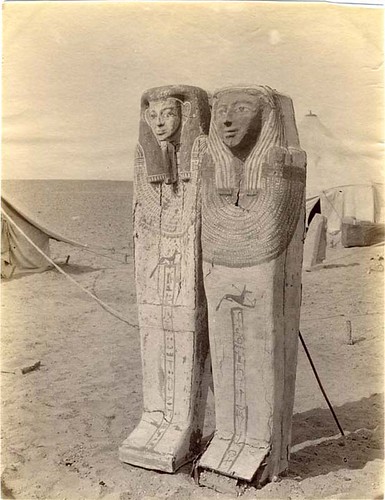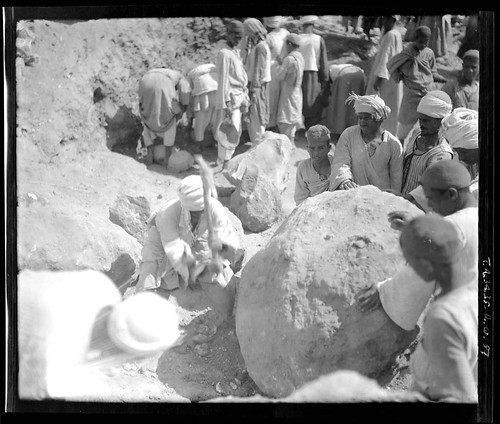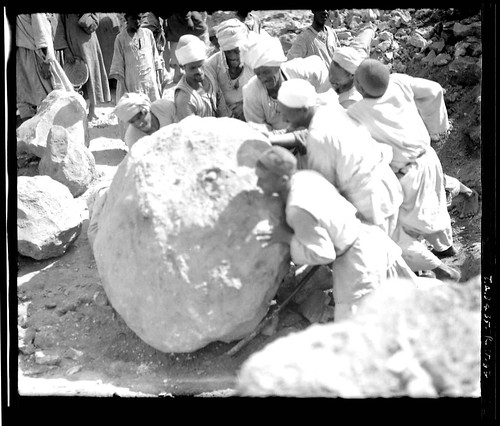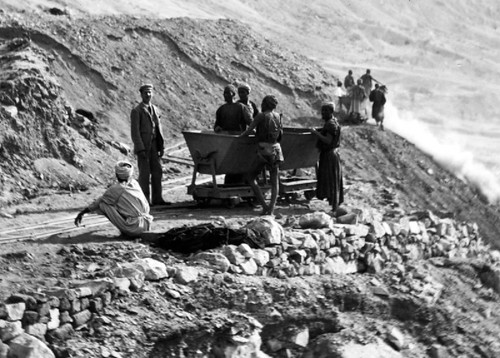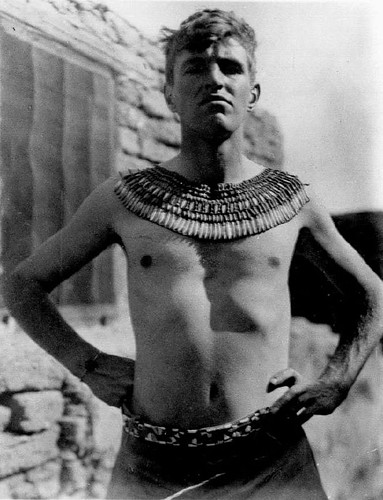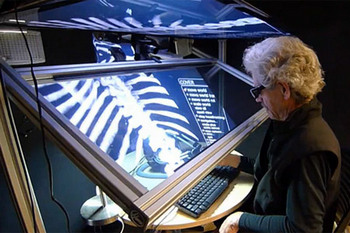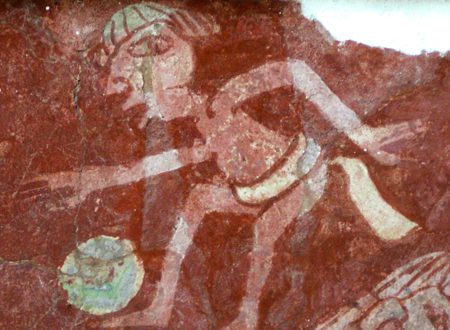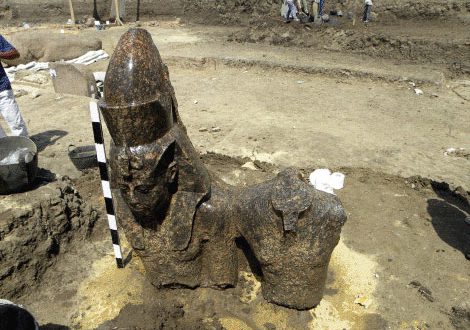Browsing through Flickr sometimes feels like a treasure hunt. I’ll never be disappointed – great photographs get uploaded to it daily – but once in a while you find that really Astonishing Photograph, especially since more and organisations started making their archives available to the public through the Commons and private Flickr streams. Today was one of those ‘Wow!’ days, as I discovered the Flickr stream of the Egypt Exploration Society – as the EEShas been working in Egypt since 1882 – filled with marvelous photographs from ‘ancient times’. My 5 favourites from the ‘the early days of Egyptology’:
Ahnas Prints – ‘Types of Mummy-cases’
The excavations by the Egypt Exploration Society – then still known as the ‘Egypt Exploration Fund’ – at Ahnas were conducted by Edouard Naville in 1891 to 1892. Some of the coffins are currently UK museums while others were reburied on the site. But the cemeteries proved not to be as rich as Naville might have hoped: “Finding that the necropolis gave so little result, and that there was nothing belonging to older epochs, we left the desert, and went over to the mounds of Henassieh All over the mounds, scattered blocks of red granite show that there must have been some construction of importance.”
The Royal Tomb of Akhenaten at Amarna
The Royal Tomb at Amarna – also known as the Royal Wadi – was discovered in 1891 by archaeologist Alessandro Barsanti and was ment for the burial of Akhenaten as well as that of multiple members of his family. Taken during the Society’s work at the royal tomb during the 1934-1935 season, these photographs capture exactly how I- and I trust I’m not alone in this – imagine a ‘tomb opening’ to look like. (Yes, I know, these photographs from the opening, but still…!)
Howard Carter overlooking excavations at Deir el Bahri
Howard Carter is seen here supervising a group of workmen moving material cleared from the temple site in one of the Decauville cars which Naville borrowed from the Service des Antiquities along with 460 metres of tramway. This photograph was taken in 1893, during excavations at Deir el Bahri.
Pay-day at Balabish
Andrew Bednarski in ‘The EES:the early years’ says about this photograph: “This view of pay-day at Balabish is typical of scenes on excavations in Egypt until fairly recent times. The director, Gerald Wainwright, sits behind a table with the workmen gathered before and around him, waiting to be paid. Most of the workmen have the tools of their trade, the hoe and basket, and wear traditional Egyptian dress, in contrast to the rather formal western clothes (including a tie) of Wainwright.”
JDSPendlebury at Amarna
John (Devitt Stringfellow) Pendlebury was one of the most famous early 20th century archaeologists. Being unable to decide to go for Egyptian or Greek archaeology, he started studying Egyptian artifacts found in Greece. Later, he managed – thanks to the temperature difference between Greece and Egypt – to excavate in both countries simultaneously. Pendlebury started excavating at Amarna in 1929, and later became Director of Excavations there. Pendlebury died during WWII – he was in his late thirties – from a gunshot wound to the chest.
For more photographs from the archives, check out the EES’s Flickr stream. You can also keep an eye on their Tumblr Blog, as well as become a fan of the Society on Facebook. If you’re fascinated by archive photographs from the ancient world (or at least enjoyed my 5 favourites listed here), you definitely want to have a look at the our selection from the Cornell University Library’s Flickr stream as well!

